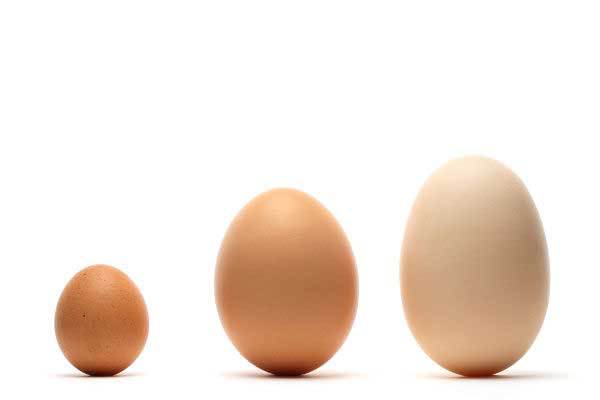Controlling Egg Size

Recently, I was commissioned to provide an extensive review on how to increase egg size (weight) in laying hens (commercial eggs). Graciously, my customer, allowed me to share the results, in brief form, with my readers in the WP blog.
1. Body weight
Heavier hens will produce heavier eggs. This must be balanced as increased value from heavier hens must exceed feed cost to produce and maintain heavier hens.
2. Feed intake
To some extend this is connected to the above, but as long as hens reach mature body weight, a slight increase in feed intake will result in heavier eggs without further increasing body weight.
3. Protein intake
Egg weight responds to methionine levels mostly during peak production (38-45 weeks). In late-cycle, egg numbers is the figure that responds the most to methionine levels.
4. Linoleic acid
Some studies indicated that adding extra linoleic acid may increase egg weight. This obviously is complicated by the issue of energy/feed intake and body weight.
Controlling the above parameters can not only increase egg size during peak production, but it can also help in reducing egg size in late-cycle when egg shell quality deteriorates. Obviously, the correct phase-feeding program should take into account market requirements for egg size and overall egg quality, while maintaining profitability!












